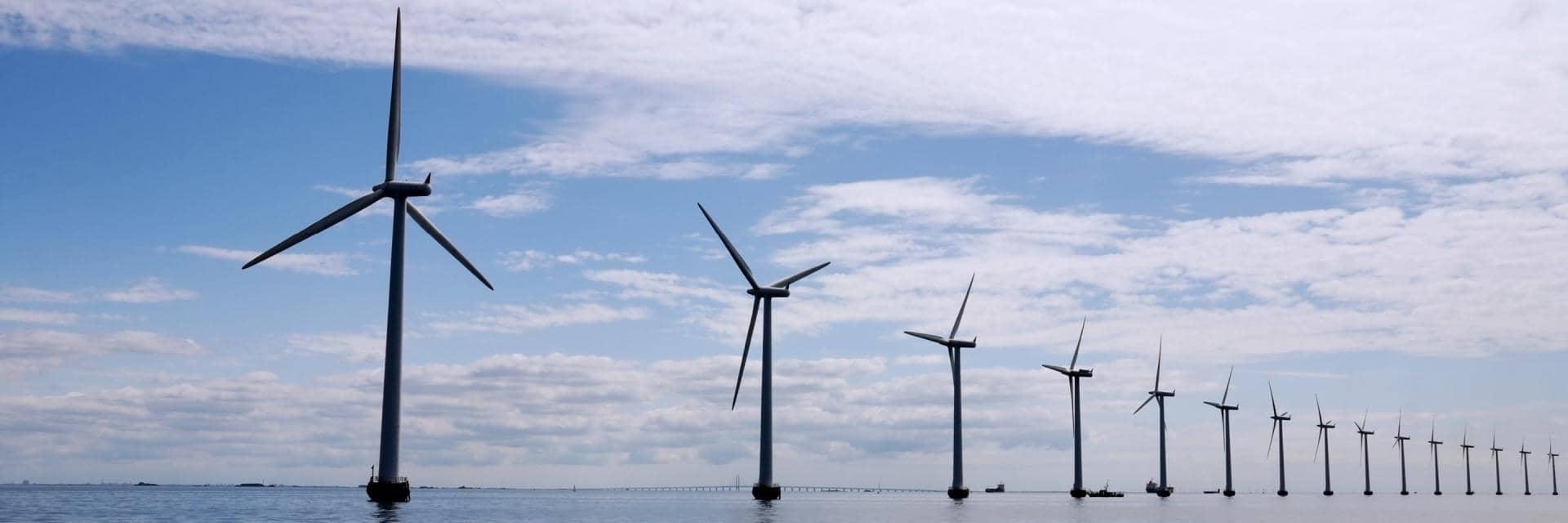With European energy markets in upheaval, what are the implications for the transition to clean energy and how can investors position their portfolios in respect of climate change?
Only a few months ago, global attention was again focussed on tackling climate change accelerating the transition to lower carbon energy following the United Nation’s COP26 gathering. However, with a backdrop of more challenging macro headwinds, further exacerbated by the war in Ukraine, the dynamics have rapidly shifted.
Energy security and affordability are now key items in global and governmental discussions. Spot market prices for fossil fuels have rocketed to long-term highs, while companies with low-carbon solutions have fallen out of favour, in parallel with a rotation out of growth sectors in equity markets.
Investors may now be questioning their positions, and potential opportunities, in energy transition. In this first of a two-part article, we review, with a focus on Europe, the drivers of the current situation and the responses of the UK and EU. In the second, we will consider the effects for lower carbon energy sectors and the potential approaches for investors.
Path for an energy transition
A low carbon world is impossible without a fundamental reorientation of energy production and consumption. Three key sectors drive a majority of demand - transportation, buildings, and industry. While the energy mix will vary by sector, as well as by geography, over 80% of global energy supply is now provided by coal, oil and natural gas. To reduce emissions, the carbon intensity of this energy mix needs to reduce even as expected demand for energy increases.
In Europe, this transition has been underway for considerable time. The EU has more than doubled its share of energy provided by renewables, from 6.4% in 2000 to 15.8% in 2019. To further accelerate its transition, the European Green Deal in 2019 set the goal of making Europe the first climate neutral continent by 2050.
Additionally, the EU’s “Fit for 55” plan last summer laid out a legislative agenda to cut emissions by 55% by 2030, as an interim stage. Notably with this plan, it aimed to boost clean energy by setting a binding target of renewable sources in the EU’s energy mix to 40% by 2030.
Similarly, the UK first enshrined its climate commitments in law in 2008. With the country committed to a net zero target by 2050, its 2021 sixth carbon budget pledges to cut 78% of greenhouse gas emissions by 2035. Progress, while mixed, has nonetheless resulted in renewables generating for the first time marginally more of the UK’s electricity (42%) compared to fossil fuels (41%) in 2020.
A bumpy road
Few long-haul journeys are without turbulence, especially one as challenging as energy transition. Even prior to the Russian attack on Ukraine, market forces were driving energy prices upwards and pushing interest in fossil fuel back on the agenda.
As post-lockdown economic growth rebounded, demand for fossil fuels has followed, and even exceeded, pre-pandemic levels. Supply, however, has not correspondingly risen as fossil fuel producers have limited their capacity investment in recent years, given concerns about returns and momentum around countries’ net zero targets.
However, even with the growth in renewables, the result, in part, is that switching to cleaner energy has not been fast enough to shield Europe from its exposure to fossil fuels. With Russian aggression adding pressure and uncertainty to the markets, as well as a moral imperative, the EU and UK are contemplating how to tackle the overlapping energy dilemmas of economic, environmental, security, and social issues.
EU’s course correction
European governments have acted quickly in response, though tactics have been driven by their relative strategic positions, existing plans, and local politics.
For the EU, with about 60% of energy from imported fossil fuels, it is particularly sensitive to geopolitics and market forces. In fact, 90% of its natural gas is imported. Of this, 45% comes from Russia. In response to Russian attacks, at the beginning of March the bloc set out a plan called REPowerEU to provide “more affordable, secure and sustainable energy.”
Overall, this plan is an acceleration of the Fit for 55 goal, with a focus on dependence on Russian imports and reducing costs to consumers. However, measures to reduce dependence on Russian gas are varied. The most straightforward involve diversifying gas suppliers through more liquefied natural gas and non-Russian pipeline delivery. Linked to this is increased gas storage facilities and the building up of reserves to higher threshold levels to minimise the risk of shortfalls in winter months.
EU supply dynamics
On the supply side, the plan seeks to double the annual production of biomethane by 2030. Also, it proposes the creation of a Hydrogen Accelerator to support an additional 15 million tonnes (mt) of hydrogen beyond the initial 5mt planned for by 2030. Additionally, the plan wants to accelerate the development of existing solar, wind, and heat pump projects by addressing bottlenecks in infrastructure and planning.
Notably, energy efficiency is put forth as a “first principle” to be applied across all sectors and policies, to reduce demand. Also notable is that actions to reduce the financial impact on vulnerable and household customers are the first ideas to be highlighted. This includes providing support for temporary state and price regulation and a windfall tax on energy company profits.
In sum, the plan broadly aligns with existing EU decarbonisation efforts seeking to move them faster and earlier. Ambitiously, it seeks to implement the majority of the actions within a year to achieve a two-thirds reduction of gas imported from Russia.
UK’s course correction
For the UK, given it imports of around one-third of its fossil fuel energy, it has faced less pressure to transition than the EU of late. Nonetheless, increased global prices for these fuels impact consumers and industry, and have helped cause 31 challenger energy suppliers in the country to go out of business since the start of 2021.
After delays, due to negotiations with the Treasury and given the potential implications of the Russia-Ukraine war, the “British energy security strategy” was released at the start of April. Its aim was to set out a “secure, clean and affordable British energy for the long term.”
Overall, the plan aims for incremental levels of ambition around traditional renewables. Additionally, it adds support for other low-carbon fuels (nuclear, hydrogen) and potential return to fossil fuels through offshore drilling and fracking. Contrastingly, there is little focus on immediate support to help consumers or address reliance on Russian fossil fuels. However, the UK has a wide diversity of providers, of which Russia only accounts for 4% of imports in 2021.
UK’s focus on low-carbon electricity
The main goal of the strategy is to increase low-carbon electricity production to 95% by 2030, ahead of the existing aim to decarbonise the energy sector by 2035. Offshore wind is a focus, with the target of reaching 50 gigawatt (GW) of energy produced by 2030, an increase of 10GW from prior aims. However, onshore wind does not feature in quantitative terms, but it includes plans is to create a taskforce to facilitate planning permissions.
In other areas, the actions are more striking. Nuclear is set an ambition to produce up to 24GW by 2050, compared to an existing target of 10GW. The plan sets out ambition to double the UK’s target for hydrogen production to up to 10GW by 2030. Finally, the North Sea is offered “a new lease of life” with another round of licenses planned to be auctioned later in 2022.
Together the initiative, while light on detailed targets or plans, sets out a primary aim to accelerate UK-generated power and increase energy independence.
Implications
Rising fuel prices, exacerbated by the Russian invasion, have forced governments to enact measures to make energy both more affordable and more secure.
On paper, the environmental outcomes will likely be mixed with some proposals accelerating the decarbonisation and others delaying or damaging it. In the follow-up article, we will consider the implications of these changes for various energy types and potential strategies for investors.
For the moment, there is a clear conclusion. Current dynamics will not stop governmental efforts to drive a transition to decarbonised energy system. So while the journey may look different to the path we would have expected at the end of 2021, the objective remains the same.

